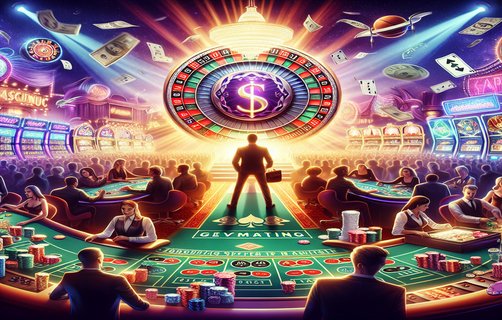Betting Beyond Chance: The Intersection of Strategy, Luck, and Social Engagement in Modern Gaming


In a realm where chance collides with strategy, casino games like blackjack, poker, and even social casino games have emerged as not merely forms of entertainment, but as rich landscapes for social commentary. The complex interplay between luck and skill, coupled with the advent of innovative payment systems and in-house jackpots, invites a closer look at the modern gaming experience. In this exploration, we venture down the path of a modern-day pathfinder, surveying the terrain of **Yggdrasil**, the mythical tree of life, to gain insights into the broader implications of gaming in today’s society.
A game of blackjack, for instance, is often viewed through the lens of skill versus luck—where players are tempted to rely on logical strategies like **bluffing frequency** and **implied odds** while placing their bets. The art of bluffing is central to many games; it’s a nuanced dance where players must read each other's signals and decide when to hold their cards close and when to reveal their strategies. In a society increasingly drawn towards analytics, the ability to bluff effectively denotes not just a mastery of the game, but also a savvy understanding of human psychology.
When discussing the poker table or the blackjack pit, we also consider the concept of **minimizing variance**. This is an extension of the mathematical principles that underpin not only gaming but also financial decision-making in real life. As players become more adept at reducing risk and maximizing their potential payout, they unwittingly mirror the strategies that investors employ in stock markets. The correlation between gambling and financial risk-taking reveals a society that continually dances on the edge of fortune, building towards an era where every hand dealt could either stabilize fortunes or lead to financial despair.
How do these games integrate into our social fabric? **Social casino games**—those free-to-play titles that paint the digital landscape with colorful interfaces and engaging mechanics—attract millions. Players connect virtually, competing against friends and strangers alike without the risks traditionally associated with gambling. Yet, despite the absence of real money, the thrill of competition and the lure of jackpot winnings empower a social commentary on desire, addiction, and the psychology of risk-taking. Are we satisfying a craving for social interaction that real-world engagements may not fulfill?
At the heart of this phenomenon lies the convergence of technology and finance, exemplified by payment methods like **Paysafecard**, which offers anonymity and ease of use. In an age where privacy is increasingly compromised, the veil that such payment systems provide is alluring; it allows a generation to engage with their vices and pleasures in a controlled manner. However, one must consider the broader implications: Does this foster responsible play, or does it tempt players into the shadows of compulsive gambling?
Moreover, the allure of **in-house jackpots** introduces another layer to our narrative. These jackpots are tailored to allure players while enhancing the profitability of casinos. By presenting dreams of life-changing payouts, the establishment entices individuals into believing they can beat the odds. This trend raises vital questions about the ethics of gambling establishments: Are they mere facilitators of dreams or predators exploiting human vulnerability?
In conclusion, the gaming world—be it through a round of blackjack, the social connections formed in online platforms, or the thrill of an unexpected jackpot—reflects a broader social tapestry that weaves together aspiration, risk, and community. As we navigate this landscape, it becomes imperative to analyze our relationship with chance and strategy as participants in a larger societal narrative. Understanding these dynamics propels us toward a future where we can appreciate the intricacies of play while fostering an environment that promotes safety, responsibility, and awareness in an ever-evolving cultural conversation around gambling and entertainment.
